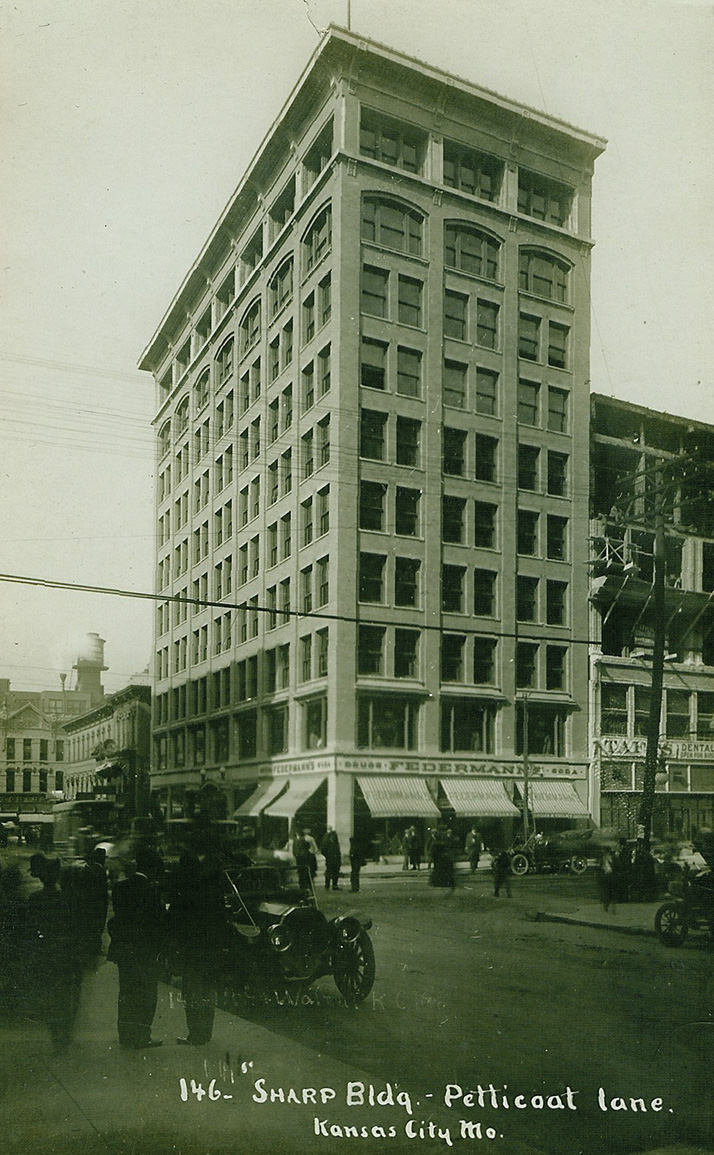Michael Bushnell
Northeast News
This week’s postcard, published by the South West News Company of Kansas City, Mo., features a Real Photo postcard view of the Sharp Building on Petticoat Lane.
Technically, the address is 11 E. 11th St., or the “corner of Walnut and 11th.” The 10-story building, built in 1905, was one of Kansas City’s first “fireproof” buildings.
Charles H. Sharp, a railroad contractor of some prominence and the building’s namesake, erected the building. The building stood on ground originally purchased in the 1860s by Irish immigrant Peter Soden, who owned large tracts of land downtown prior to the land development boom of the 1870s.
Later in its life, the building became the site of the Boys Orphan Home, administered by the Catholic Diocese of Kansas City. It was at that time the building was renamed the Lillis Building in honor of former Kansas City Bishop Thomas F. Lillis, who also had a high school named after him.
Federman’s Drug Store was the key tenant on the ground floor, next to the Taft Dental Rooms. The famous Owl Drug Store later occupied the space, as did Woolf Brothers and Jaccards Jewelers.
“Progress,” however, was coming to downtown in the 1970s and early 1980s. Developers aggressively sought the land for the construction of an office building. After a long and futile struggle by local preservationists in the mid-1980s to have the Sharp and the Waldheim buildings designated as historic landmarks, the stately buildings were razed to make way for the new One Petticoat Lane building, a stoic, five-story granite, steel and glass structure that houses the city’s Economic Development Corporation and other private companies.
It’s just one more shining example of how Kansas City’s architectural history gets thrown into the landfills instead of being restored and preserved.



















